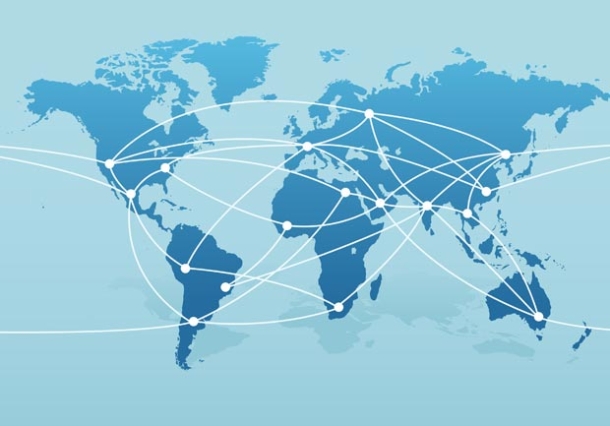
Companies are in a perpetual race to expand sales. And the easiest way to do that is to expand their well known successful brands into other categories. As marketing consultant and author of many bestsellers Al Ries puts it “If a brand is well known and respected, why can’t it be line extended into another category. That’s common sense. That’s why Xerox, a brand that dominated the copier market, introduced Xerox mainframe computers. A decision that cost the company billions of dollars. That’s why IBM, a brand that dominated the mainframe computer market, introduced IBM personal computers. In 23 years of marketing IBM personal computers, the company lost $15 billion and finally threw in the towel and sold the operation to Lenovo, a Chinese company.” Ries is the author of such marketing classics (with Jack Trout) as The 22 Immutable Laws of Marketing and Positioning: The Battle for Your Mind. In this interview to Vivek Kaul he speaks on various aspects of branding and marketing.
You have often said in the past that there is a a big difference between common sense and marketing sense. Could you discuss that in some detail with examples?
Common sense is another way of saying “logical.” Almost every rule of marketing is not logical, it’s illogical, which I defined as “marketing sense.” It takes years of study and personal experience to develop good marketing sense. Yet too many management people dismiss the ideas of their marketing managers because “marketing is nothing but common sense and who has better common sense than the chief executive?” Line extension is a typical example. If a brand is well known and respected, why can’t it be line extended into another category. That’s common sense. That’s why Xerox, a brand that dominated the copier market, introduced Xerox mainframe computers. A decision that cost the company billions of dollars. That’s why IBM, a brand that dominated the mainframe computer market, introduced IBM personal computers. In 23 years of marketing IBM personal computers, the company lost $15 billion and finally threw in the towel and sold the operation to Lenovo, a Chinese company. That’s why Kodak, a brand that dominated the film-photography market, introduced Kodak digital cameras. In spite of the fact that Kodak had invented the digital camera, the company was never successful in marketing the cameras under the Kodak name. And recently Kodak went bankrupt.
With all the experience you have had consulting companies all these years which area of marketing do you feel that marketers have the most trouble with?
We have had the most trouble working with large companies marketing big brands. And the issue is always line extension. Companies want to expand their sales so they figure the easiest way to do that is by expanding their brands into new categories. In other words, line extension. We have worked with Burger King, Intel, Xerox, IBM, Motorola, Procter & Gamble and dozens of other companies that invariably wanted to expand their brands whereas we almost always recommend the opposite strategy. Narrow the focus so your brand can stand for something. The second issue is timing. We have always recommended that companies try to be the first brand in a new category. But that is a difficult sell to top management. Their first question is usually, What is the size of the market? Of course, a new category is a market with zero revenues. And many, many management people never want to launch a product into any category that doesn’t already have a sizable market. We worked for Digital Equipment Corporation, a leader in the minicomputer market. We tried to get them to be the first to launch a personal computer for the business market. (IBM eventually was the first to do so, but without a new brand name which led to their failure.) In spite of days of meetings and presentations, the CEO of Digital Equipment refused to launch such a product. “I don’t want to be first,” he said, “I want IBM to be first and then I’ll beat their specs.” After IBM launched its personal computer, Digital Equipment followed, but never achieved more than a few percent market share. Eventually the company more or less fell apart and was bought by Compaq at a discount price.
How can a No. 2 brand compete successfully with a leader?.
What a No.2 brand should do is easy to explain, but difficult to execute. A No. 2 brand should be the opposite of the market leader. Why is this difficult to do? Because it’s illogical. Everyone assumes the No.1 brand must be doing the right thing because it’s the market leader. Therefore, we should do exactly the same thing, but better. That seldom works. Take Red Bull, the first energy drink and the global market leader. One reason for Red Bull’s success was the fact that it came in a small, 8.3-oz. can that symbolizes “energy,” like a stick of dynamite. So almost every competitive brand was introduced in 8.3-oz. cans and marketed as “better” than Red Bull. Except Monster, a brand introduced in 16-oz. cans in the American market. Today, Monster is a strong No.2 brand with a 35 percent market share compared to Red Bull’s 43 percent share. Also in the American market, BlackBerry was the leading smartphone until Apple introduced the iPhone. BlackBerry had a keyboard. Apple eliminated the keyboard and used a “touchscreen” instead. Mercedes-Benz was the leading luxury-vehicle brand until BMW came into the market. Mercedes vehicles were big and comfortable, so BMW became smaller and more nimble, as dramatized in the brand’s long-running advertising theme, “The ultimate driving machine.” As a matter of fact, BMW introduced the campaign with a two-page advertisement headlined: “The ultimate sitting machine vs. the ultimate driving machine.”
Do long running marketing campaigns help? How many companies have the patience to run a marketing program for two or three or four decades?
Next to line extension, that’s the biggest problem in marketing today. Companies don’t run marketing programs nearly long enough. The best example of a long-term successful campaign is the one for BMW. “The ultimate driving machine” strategy was launched in 1975 and the company still uses the same slogan today. That’s 37 straight years. Most marketing programs don’t last longer than three or four years. That’s way too short a time to make a lasting impression in consumers’ minds. I can’t recall any major marketing program, except for BMW, that has lasted more than a decade or so.
In a recent column you wrote that logic is the enemy of a successful brand name. What did you mean by that?
By “logic” I mean what you would use as a brand name if you did not study marketing and had no experience as a marketing person. In other words, common knowledge versus specialized knowledge. It’s like the Sun and the Earth. Common knowledge would suggest that the Sun revolves around the Earth and not the reverse. Look out your window and it’s obvious that the Sun is moving and the Earth is standing still. But specialized knowledge knows that isn’t true.
What is the connection with brand names?
As far as brand names are concerned, logic or common knowledge suggests that a generic name like Books.com would be a better choice than Amazon.com. If the prospect wants to buy a book, then logically the prospect would go to a website like Book.com or Books.com.
But a marketing-trained person knows that isn’t true. It’s not how a mind words. When a person hears the word “Book,” he or she doesn’t think it’s a website at all. It’s the generic name for a category of things. On the other hand, thanks to its marketing program, “Amazon” has become a specific name for a website devoted to selling books. So when a person thinks, “I want to buy a book on the Internet, he or she doesn’t think “Books.com,” he or she thinks “Amazon.com.” In almost every category, a specific “brand” name performs better than a generic “category” name. Google.com is a better name than Search.com. YouTube.com is a better name than Video.com. There is a caveat, however. In the absence of a marketing program that establishes a brand name in consumers’ minds, a generic name could do well.
Why do you say that as a general rule, any name that specifically defines a category is bound to be a loser?
Consider how a mind works. If I say “coffee,” you literally hear that word in your mind spelled with a lower-case “c.” It’s a common noun, or a generic word that stands for an entire category of things. The same reasoning hold true for a more specific name like “High-end coffee shop.” If I say “Starbucks,” on the other hand, you literally hear that word in your mind spelled with a capital “S.” It’s a proper noun, or a brand name that stands for a specific chain of high-end coffee shops. Oddly enough, you can use common English nouns in another country as brand names? Why is this so? Because consumers don’t know the meaning of these common words. So these words become proper nouns instead and usable as brand names. For example, a stroll down a street in Copenhagen turned up these store names: Biggie Best, Exit, Expert, Face, Flash, Joy, Limbo, Nice Girl, Redgreen, Sand and Steps. Nice brand names in Copenhagen perhaps. But they wouldn’t work in America.
What do you mean when you say that “the internet is exceptionally good at promoting web, not physical, brands.” Could you explain through examples?
First of all, consider the fact that the Internet has created a host of new, very-valuable Internet brands including Amazon, Google, Facebook, YouTube, Groupon, Pinterest, LinkedIn and dozens of others. How many new physical brand names were created on the Internet? I can’t think of any. The Internet is the newest, latest medium. It attracts people who are interested in what’s new and different on the Internet. So there is intense interest in any new website that promises a revolutionary way to handle some of your affairs. But there’s not the same level of interest in new physical brands. Like a new toothpaste, or a new camera, or a new breakfast cereal. That doesn’t mean that new physical brands can’t take advantage of the PR potential represented by the Internet. They certainly can, but it’s going to be more difficult for a physical brand to get a lot of attention on the Internet than an Internet brand.
You recently wrote that “If you don’t have the right strategy, good tactics won’t help you very much. And social, like all media, is a tactic. What concerns me is that too many marketers have elevated tactics — especially those of social media — to the level of strategy.” Could you elaborate on this statement?
Our leading marketing publication is called “Advertising Age.” I have suggested facetiously that the publication should be called “Social Media Age,” because a high percentage of the stories the publication writes about involve social media and marketing on the Internet. Strategy is seldom mentioned. One reason for the intense interest in the Internet is because many aspects are easily measured. A video on YouTube, for example, will be measured by: (1) The number of “Views.” (2) The number of “Likes.” (3) The number of “Dislikes.” And (4) The number and content of “Comments.” That’s a range of responses no other medium can deliver. No wonder marketing people devote endless hours to evaluating the success of Internet programs. But suppose a marketing program is not successful. Do you blame the strategy or the tactics? Today, it’s too easy to blame the tactics. My feeling, however, is that most of the time strategy is at fault.
Are there any ideas on branding which you have espoused in the past which you have now junked?
Yes, we used to think that brand names ought to communicate something tangible about the brand. Duracell is a good example. It suggests that the appliance battery is a “long-lasting” brand. But today, there are too many competitors in any given market. A tangible name like Duracell is likely to be surrounded by many other brands with similar names, confusing the consumer. A meaningless name is often a better choice. It allows you to develop your own unique meaning for the brand. Google is a good example. Initially it meant nothing, but today it means “search.”
What is your opinion on big brand names. India has a lot of them like Tata and Reliance. And they attach these names to every business or product they launch? How do you view that?
That’s line extension and it might work today in India, but would never work in America. In America, there are too many competitors in every category with distinctive brand names. A line-extended name like Tata and Reliance would be at a serious disadvantage here. Why does it work in India? I’m not an expert, but I believe that India suffers from a shortage of venture capital as compared to the United States. It’s hard for an entrepreneur to launch competitive brands to Tata and Reliance because it’s difficult to raise enough money for their introduction. But I believe that will change in future so both Tata and Reliance should be concerned about the future of their brands.
(Interviewer Kaul is a writer and can be reached at [email protected])
 Vivek Kaul
Vivek Kaul 


